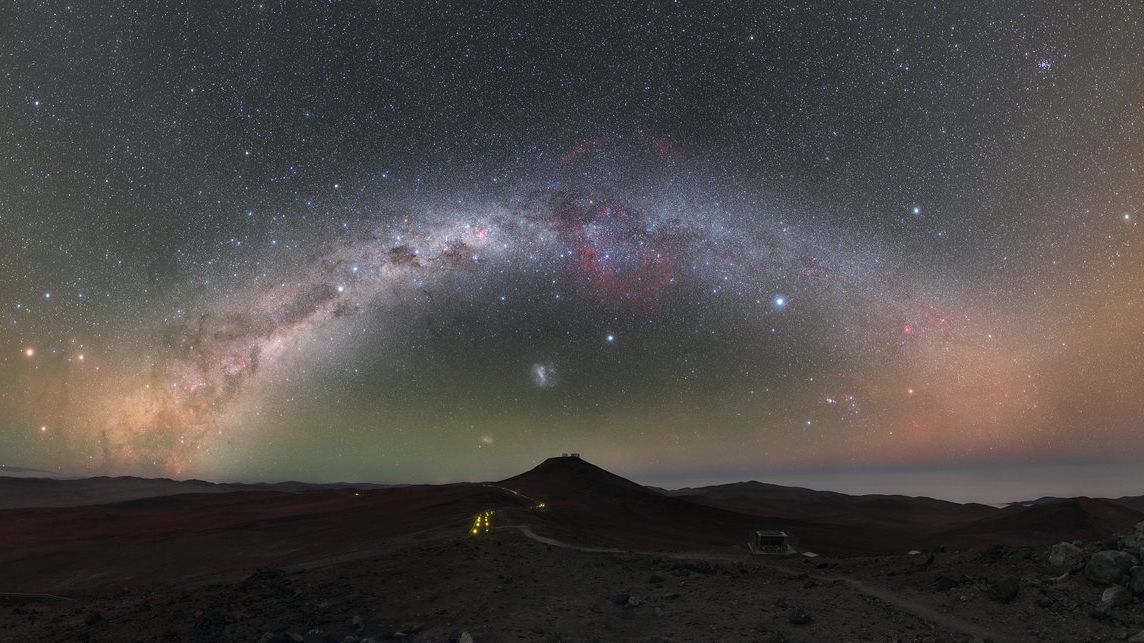
New standards in the fight against light pollution are helping bring darker skies to Chile — not only will this protect our view of the stars, but also human health and biodiversity.
Chile is an attractive location for astronomers because its skies are great for stargazing, particularly in the Atacama Desert where tall peaks, a stable atmosphere and over 300 clear nights per year on average provide excellent observing conditions. As such, Chile is home to a large number of the world’s most powerful optical telescopes. The European Southern Observatory is based there, with observatories at La Silla, Cerro Paranal (home to the Very Large Telescope) and Cerro Armazones, where the huge 39-meter Extremely Large Telescope is presently under construction. Plus, the National Science Foundation’s NOIRLab also has the 8-meter Gemini South Telescope, the 4.1-meter SOAR (Southern Astrophysical Research) telescope and the Cerro Tololo Inter-American Observatory in Chile, while the 25.4-meter aperture Giant Magellan Telescope is being built at the Las Campanas Observatory.
The Chilean regions of Antofagasta, Atacama and Coquimbo, which play host to these observatories, have thus had special lighting regulations for years to protect their dark-sky status for astronomers. Now, a New National Lighting Standard established by the Chilean Ministry of the Environment is being rolled out across the rest of Chile to emulate the dark-sky success of these science locations.
Related: The loss of dark skies is so painful, astronomers coined a new term for it
However, the new lighting standards are not just about preserving the night sky for astronomy. Studies in many countries have shown that light pollution has a detrimental effect on both human health and wildlife.
“There is increasing scientific evidence of the effects of light pollution exposure on people,” Daniela González, the executive director of the non-profit Fundación Cielos de Chile that works to protect the dark sky, said in a statement. “Numerous investigations demonstrate its incidence in pathologies such as obesity, depression, as well as breast cancer and prostate cancer.”
The new standards call for the improvement of outdoor lighting, such as street-lamps and floodlights, by moving away from intense blue light to softer amber hues. Illuminated advertising must also remain switched off between midnight and 7am per the ruling — imagine shutting down all advertising in New York City’s Time Square or London’s Piccadilly Circus for seven hours every day.
“By establishing intensity, color temperature and time limits, the New National Lighting Standard will allow a rational, efficient and sustainable use of artificial lighting, making the protection of people and the environment compatible with the good use of light,” said González.
For the first time in Chile, biodiversity has also been officially recognized as under threat from light pollution; wildlife endangered by artificial light will get extra protection.
For example, insect pollinators, which play a vital role in maintaining crops, are often active at night while navigating by moonlight or bright starlight. Artificial light can confuse them, and has actually played a part in their decline.
Similarly, a seabird native to the coasts of Chile, Ecuador and Peru called the Markham storm petrel has become endangered as a consequence of light pollution as well. The storm petrels have evolved to use the light of the moon and stars to guide them on flights from their nests to the desert where they breed. Urban lighting disorientates them. They often confuse it for the light of the stars and food sources, meaning many of them never even make it to the place they’re headed: The Atacama Desert.
Related Stories:
“Various research evidence that light pollution reduces biodiversity because it alters the feeding, reproduction and migration patterns of some species,” said González. “This New National Lighting Standard seeks to reverse these negative impacts in those places that are strategic for conservation efforts.”
And, of course, the new regulations also protect the dark sky sanctuary that is home to the many observatories in Chile. In a statement earlier this year, Guillermo Blanc, the president of Fundación Cielos de Chile and an associate director at Carnegie Observatories and Las Campanas, spoke of the threat to astronomy in Chile from light pollution.
“The Atacama Desert has always been an extremely dark place, which has unique conditions for astronomical observations, but the advance of this pollution, at the rapid and accelerated rate we are currently seeing, puts at risk the viability of the operation of astronomical observatories in the next 30 years,” he said. “We risk losing the best, if not the only, place from which many observations can be made to understand and learn about the universe.”
It is therefore particularly fitting that astronomy has been able to influence how people use lighting more responsibly in the rest of Chile, and that astronomy’s standards for light pollution are now becoming the country’s standards.
